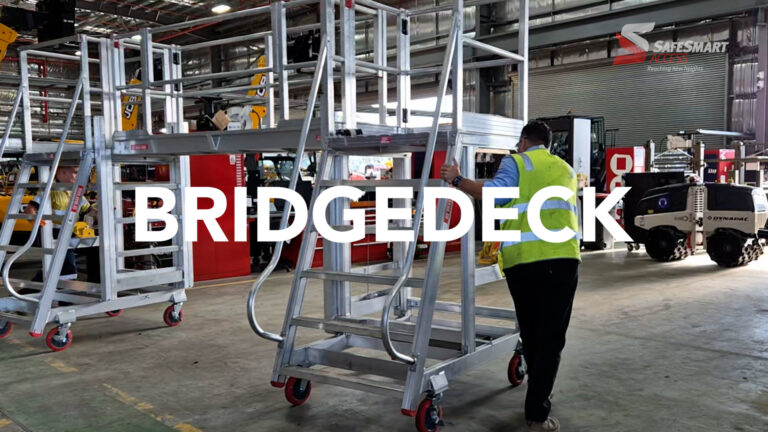Why SafeSmart Access SmartStairs Are the Secret Weapon on the M1 to Raymond Terrace Project
Reaching heights of up to 18 metres without lateral ties, SafeSmart Access SmartStair towers offer a practical, freestanding solution for working at elevation. Their stability and modular design let crews reach bridge spans quickly and confidently—without the excess components typical of traditional scaffold.
The M1 Pacific Motorway extension to Raymond Terrace is a $2.1 billion project co-funded by the Australian and NSW governments that will close the motorway’s long-standing “missing link” between Black Hill and Raymond Terrace. Spanning roughly 15 kilometres, the scheme is split into two design-and-construct contracts; John Holland Gamuda is delivering the 10-kilometre southern leg from Black Hill to Tomago.
Key features include four new interchanges, a 2.6 kilometre viaduct across the Hunter River floodplain, and multiple waterway bridges, all aimed at removing up to 25,000 vehicles a day from existing bottlenecks. Construction began in early 2024, and the motorway is scheduled to open to traffic in 2028.
SmartStair Towers
With their freestanding design, SafeSmart SmartStairs eliminate the bracing and tie-ins that slow conventional scaffold builds. Crews can relocate entire six-stack tower assemblies in a single crane pick, keeping pace with headstock construction and saving hours of assembly time each week.
Construction Access Solutions
Because the towers travel intact, they function as a true construction access solution: lift, swing, set down, and resume work. The reduced handling not only accelerates the programme but also lowers manual-handling risk—an outcome strongly aligned with the project’s temporary-works strategy.
M1 to Raymond Terrace Project
On a site building 77 bridge spans across flood-prone terrain, Speed and flexibility are non-negotiable. The towers’ small footprint helps the team operate within tight work zones beside live traffic and sensitive waterways, minimising disruption while keeping deadlines intact.
Construction Site Efficiency
Every hour saved on scaffold change-overs transfers directly into core activities such as rebar placement and concrete pours. By removing repetitive scaffold builds, the project gains measurable construction site efficiency—a critical factor when a 2028 opening date is locked into funding agreements.
Scaffolding Alternatives
Traditional scaffold still has their place, but for linear bridge works, the SafeSmart system offers a compact, quickly redeployable scaffolding alternative. Fewer components mean less congestion on haul roads and lay-down areas, improving safety and material logistics across the corridor.
SmartStairs for Smart Sites
General Foreman Dan Hill describes the towers as a “game changer,” and the benefits bear him out: faster relocation, smaller footprints, and greatly reduced manual rework. For large infrastructure projects chasing tight delivery windows, modern access systems such as SafeSmart towers provide a clear path to safer, more efficient construction.






